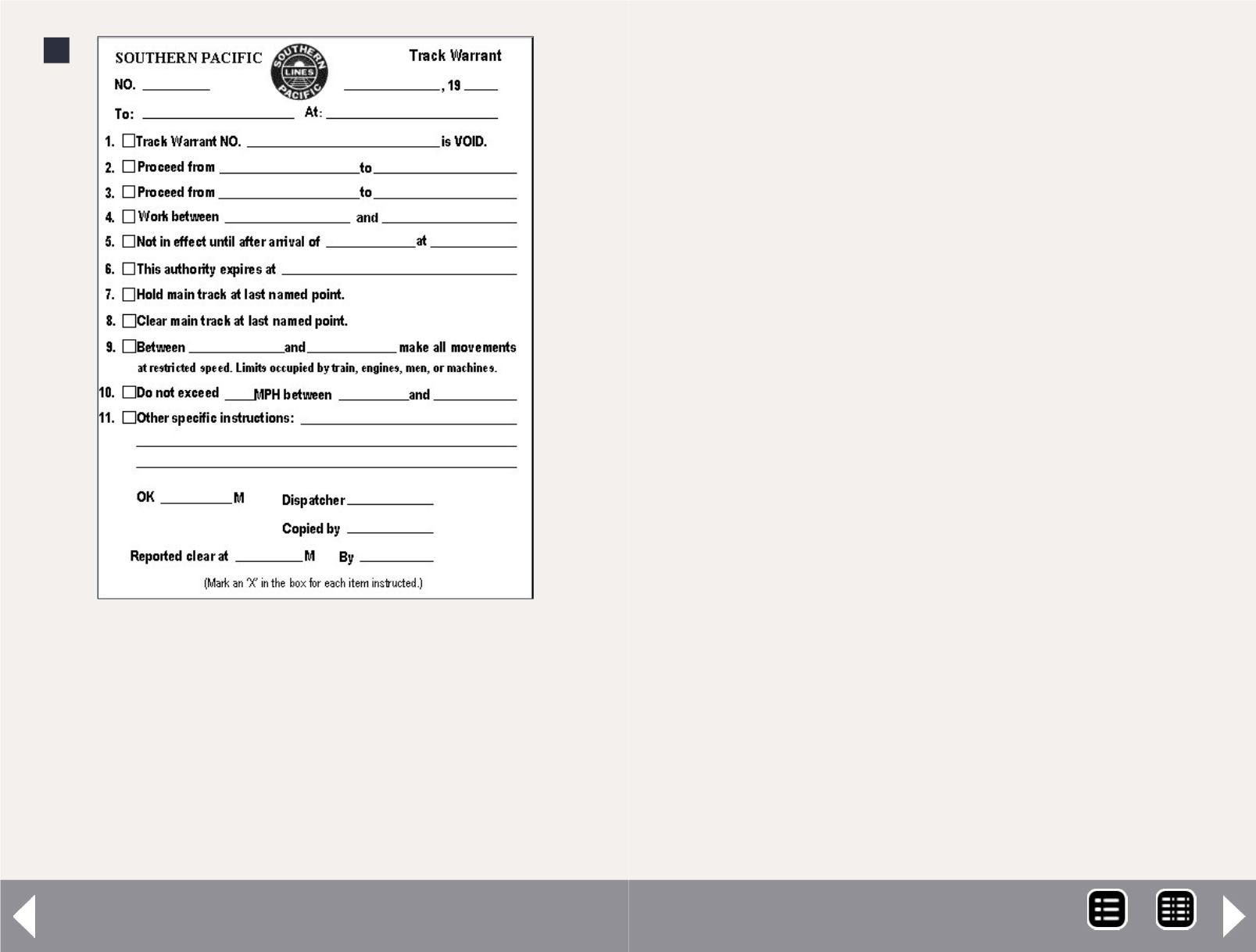
slowly enough to stop short of an accident. Trains have prece-
dence over engines. So it's not quite the free-for-all some peo-
ple suggest. Additional rules come into play with timetable and
train order operation, signaled track or a full CTC installation.
2: This track warrant is simplified for model railroad use,
and does not contain a line to authorize two trains to
occupy the same track segment. But there are other, safe,
ways for a dispatcher to do this when operating.
2
Questions, Answers & Tips - 3
Look at Rule 93 in most railroad rule books.
There are other ways to handle Bernd's situation.
Some track warrant forms include a line reading, “Joint with
______ between ______ and ______,” which can be used to
essentially grant two trains occupancy of the same track seg-
ment. Hey, they are warned, right? Joint occupancy requires
good preparation or a crystal ball on the part of the dispatcher,
who will need to know the direction and lead engine number
of any trains that might come into conflict.
Take a look at the track warrant (2) used in operations on Joe
Fugate's Siskiyou Lines. If the dispatcher has the Appaloosa
local working between Albert and Pogo, he can give that train
lines 4 and 9, letting it move back and forth between the two
defined points. Subsequent trains will get line 9, warning them
of obstructed track, and they could also get special instructions
telling them that SP 4837 is on the Appaloosa local between
Albert and Pogo.
An alternative is to dispatch the area using Direct Traffic
Control. This requires a series of named blocks, defined by
sign boards. Trains are granted occupancy of a specific block or
blocks. A train running from Albert to Pogo to Churchy can be
given all three blocks, handing blocks back to the dispatcher
as the tail end of the train clears block limits. If two locals are
working in the area, one can be given the Albert block and the
other the Pogo block, so there is no question of conflict.
In practice, on a model railroad with the usual short distances
and many through trains, it can result in a lot of talking, and
requires attentive record keeping. But on a railroad that has a
hub terminal with a lot of branches radiating out, it's a clean
and simple way of keeping the crews safe.
– MRH
MRH-Jun 2013


